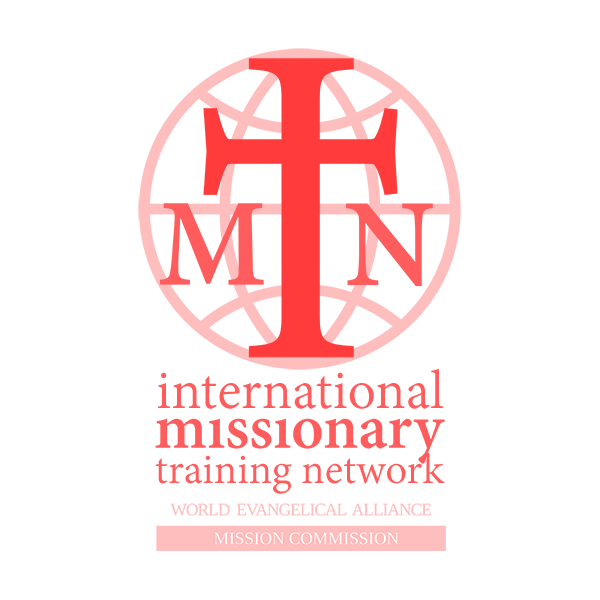Building Community Online
Presented by Ruth Wall, Mark Hedinger and Kate Wiseman (IMTN Conversation 19th May 2020)For a recording of this IMTN conversation, please e-mail Dr Kate Wiseman at This email address is being protected from spambots. You need JavaScript enabled to view it..
Introduction and Ethos of IMTN Conversations - Ruth Wall
Our aim – to provide a platform for conversation between trainers as we all respond to the need to adopt new ways of delivering training in a unique season.
Our Ethos:
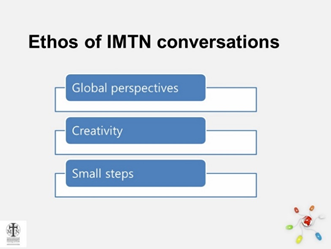
- Global perspectives. We seek to learn together and from one another what effective online learning looks like
There will be space to participate
- Creative mindsets. We come to our conversations expecting to discover new ways to design and deliver online learning
Examples of creating online teaching and learning will be shared
- 3. Small steps. We commit to take intentional steps towards developing excellent online learning experiences for our students
There will be concrete suggestions provided
Christ-centred approach to learning – Ruth Wall
- Conversations are built around three areas- Community, Curriculum and Capacity
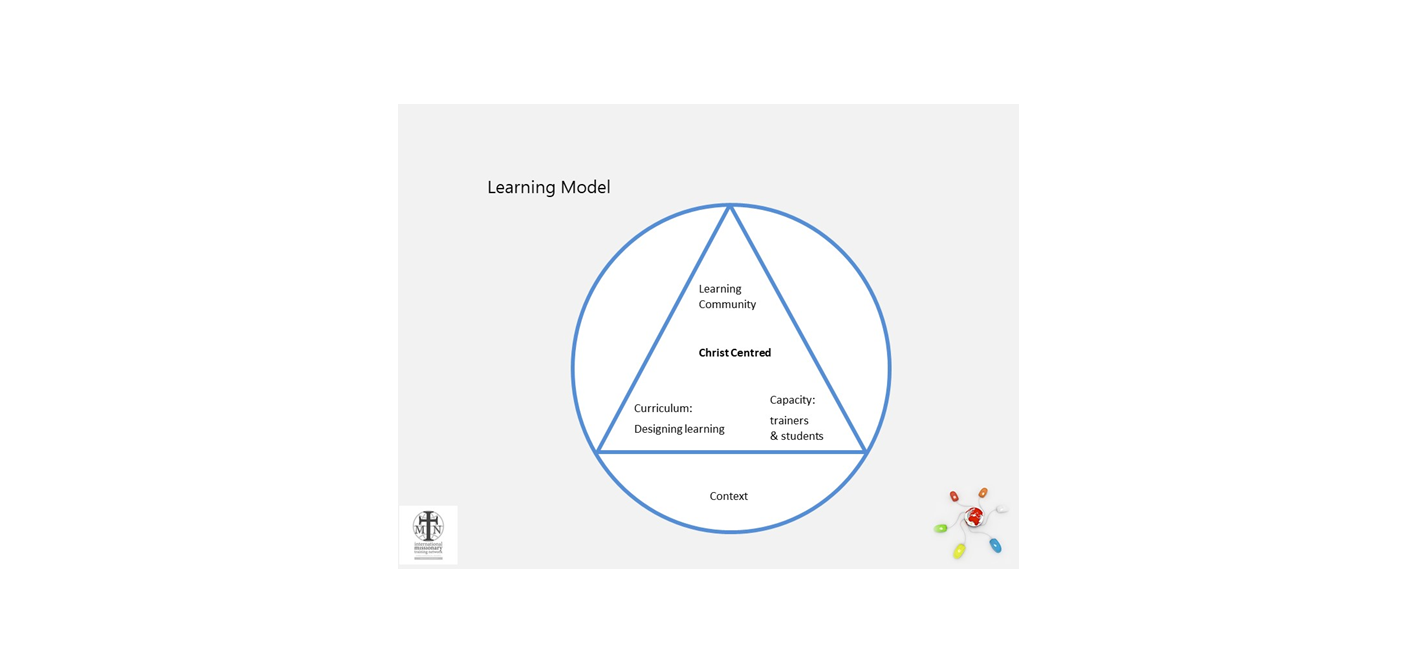
- Ruth’s doctoral research provides the model we are using to structure our conversations
- Circle represents the learning context – all learning must engage with and emerge from the context of learners
- Effective learning may be fostered as three aspects in the triangle are intentionally held together in the design and delivery:
- Often start with bottom left - curriculum especially content. This is important.
- Learning must emphasise the importance of community. In the past, this presented a challenge for online learning – but advances in technologies such as Zoom make this easier
- Capacity - having trainers who are equipped to facilitate online learning and also preparing students who can participate and persevere onlin
Purpose of this conversation: Mark Hedinger
- Building and growing - we need to work on this in small steps
- Learning - part of who we are as IMTN
- Community - not difficult imagine community in classroom - but what does it look like online?
- Community grows from God’s very nature in eternity
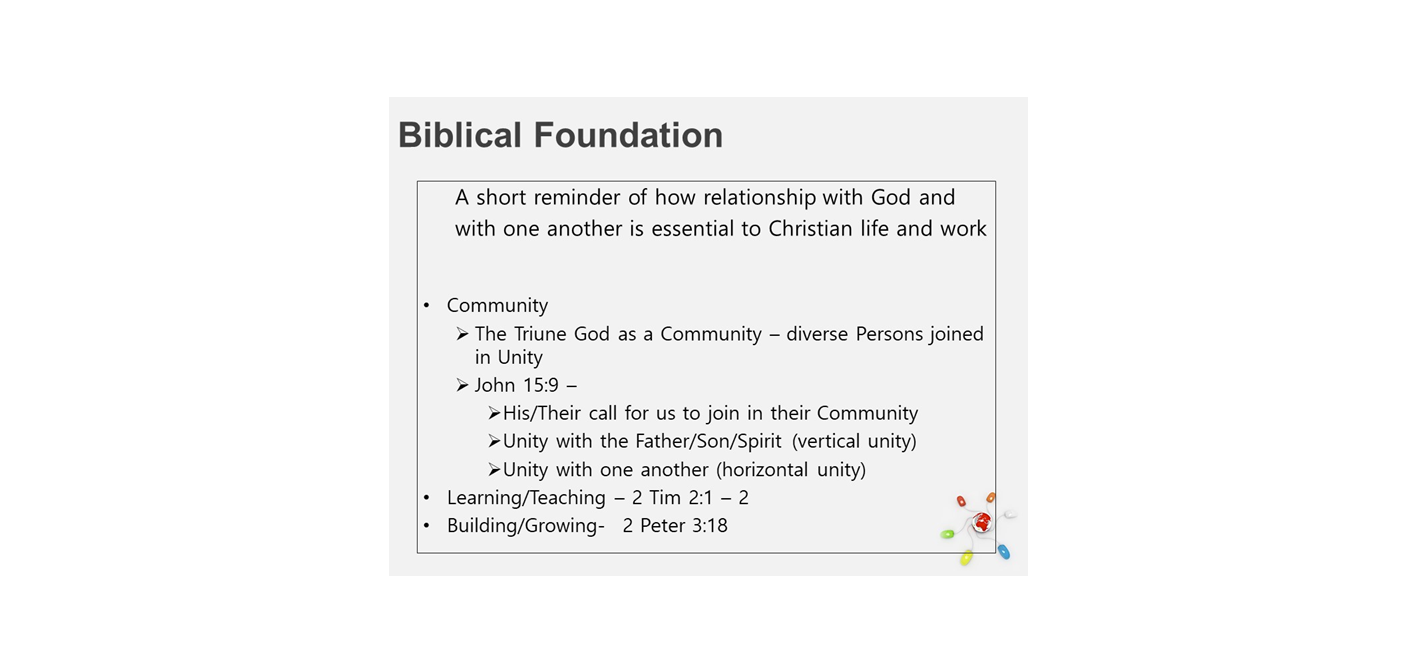
Building community online – Breakout group discussion – Kate Wiseman
- What does this God-shaped and Christ-centred community look like in an online context?
- How do we respond to Bill Taylor’s questions: "We share the deep commitment that the best equipping for ministry is done in community and this has radical implications. What do we do with the rightful place of the exploding educational options through the internet? Can they be combined with working teams in the same geography?” (Taylor, W. D. 2006. Forward. In: Brynjolfson, R. and Lewis, J., eds. Integral ministry training design and evaluation. Pasadena: William Carey Library, pp. vii-xiv.)
- We do it by intentionally building community within the online environment.
- By intentionally creating learning opportunities that engage the student (and the trainer!) despite the technical distractions going on around us.
- It takes time to develop this.
- Doctoral research into developing a framework for the effective delivery of mission training through e-learning (Wiseman 2015) showed that Community was one of 6 essential elements. Building a strong learner-centred community upon core Christian values was critical. Technology was secondary – it is an instrument for facilitating that community.
|
What are the key elements of that community? • What makes an effective Christ-centred learning community? • How can those elements be applied online? |
Group Feedback (This has been collated into themes rather than being presented in the order that it was given)
Elements of Christ-centred community and ways of applying them online
Authenticity
- Struggle and bonding through tough times - so be open.
- Healthy conflict
- Real authentic community
- Expectations and accountability
- Sharing whole of life authentically (including spiritual, emotional)
- Accountability - what are the expectations - how show respect and negotiate. So that when one crosses those lines, there is some result
- Openness vulnerability to build trust - and desire to grow
- Free to say what really think
- Wrestling
Constructive
- Instrumental learning – how you interact with the world
- Solve real problems together
Christ-centred
- Jesus has to be integral to the common cause - Christ is in there and
- Prayer to be guided by the Lord
- Holy Spirit can be speaking through everyone
Communication
- Communication with each other to have good community
- Volume of interaction and communication
Difference (to Face to Face)
- I think it is good to recognise that there are elements of 'living together in community' that cannot be replicated online. Eating, physical activities and living alongside each other are not the same online. So, while we seek to replicate things that build community, we must still recognise that, with all its benefits, the virtual world is not an ideal world.
- I was part of a webinar on online learning hosted by ATA (Asian Theology Association …) they emphasised that online is not a lesser learning, but definitely a different learning.
Discipleship
- Discipleship - whole life - not just members of churches or missions - but disciples.
- Discipleship - need connection with real life - churches.
- Following Jesus.
Engagement
- teacher presence and engagement on an individual and group level
- Inviting others to contribute, not just offloading information - to help everyone engage
- Instrumental learning – how you interact with the world
Facilitated
- Someone to facilitate to keep focus, draw out
Fellowship
- Fellowship of believers
- Prayer, devotions – especially in struggle
- fellowship – especially around the table praying together laughing together accepting each-other
- hospitality in the classroom….
Flat (non hierarchical)
- Everyone has the opportunity to add value to the community
Flexibility (Structured/Unstructured)
- Planned spontaneity– breakout, social time
- Unstructured as well as structured time
- Unstructured time to just share about life
- Some synchronous activities are important
- [but] everyone can be heard with asynchronous
- Small group, private chat beyond formal sessions
- Some trainings are once off. Others are long term - a fortnight
Focus
- Shared vision - destination, experiences
- Intentional
- Facilitation – keep the focus
Formative (Personal and Spiritual)
- Openness to growth and change
- Character formation
- Character formation, creating safe and trusting environments. volume of interaction and communication and spiritual engagement activities
- Reflective – character and spiritual formation
- Commitment to one another's growth - so can handle conflict
- We have a commitment to Jesus - a lot of shared background. How can we see people grow into the calling God has for them, because they come from different commitments?
- If skills-based then online is OK. But if it is integrity and formation of the soul... Need to see the purpose.
- Spiritual engagement activities
- Being relational and growing ourselves personally is helpful to have input in
Holistic
- Head, hearts and hands
- Emotional, Cognitive, Social
- Cognitive, social, spiritual
- Environments where we can go beyond the ideas and see whole life kind of way
- Engage the whole of life , not just the cognitive, but spiritual and emotional
Innovation
- Innovation on different subjects - brings people to think - Community changes - so not just give the same content
Intentional
- Being intentional, deliberate
Relational/ Building Relationship
- Relationships – depth – volume of communication
- Breakout times, opportunity to get to know staff
- Inclusion – everyone in the group is heard, managed dynamic
- Caters for the different cultural perspectives related to relationships.
- Intentionality to be relational.
Relational/Building Relationship Cont.
- We need time together to make a relationship. Group size has to be small enough to get to know personally, for interaction. Need explained ground rules to begin with so that people can be vulnerable. Five people in a group is a good number - more than that it takes longer.
- It takes a real effort to relate in another way. Coffee together online. This gives a different relationship. You can ask them different questions - with family, wife and kids.
- In real life one can choose who one speaks with
- To get to depth - think of the volume of communication and the nature - intentionality.
Safety
- Safe
- Vulnerable, safe space
- Safe space
- Safety and respect – inclusion
- Safety – relates to trust
- Respect – for each other
- Trust
- Creating safe and trusting environments
Shared
- Points of sharedness
- Common purpose, shared organisation, life experience
- learning together and valuing each other's contribution
- Need common cause or goal - at least in general terms - become missionaries - need agreement
- Connected with the common cause - commitment to do something differently
- Bring those connections into online discussions. People DO open themselves online. But there are caveats - Younger generations are shaped by online communities.
- Shared struggle about 5 years plus point - someone further on in the journey
- Shared struggles - Often developed around struggle - helps people to go deeper when they can share that
Support/Mentoring
- Spiritual and emotional
- Mentoring each other in the community
- Modelling to students
Summary of Key Elements of Community (Kate Wiseman)
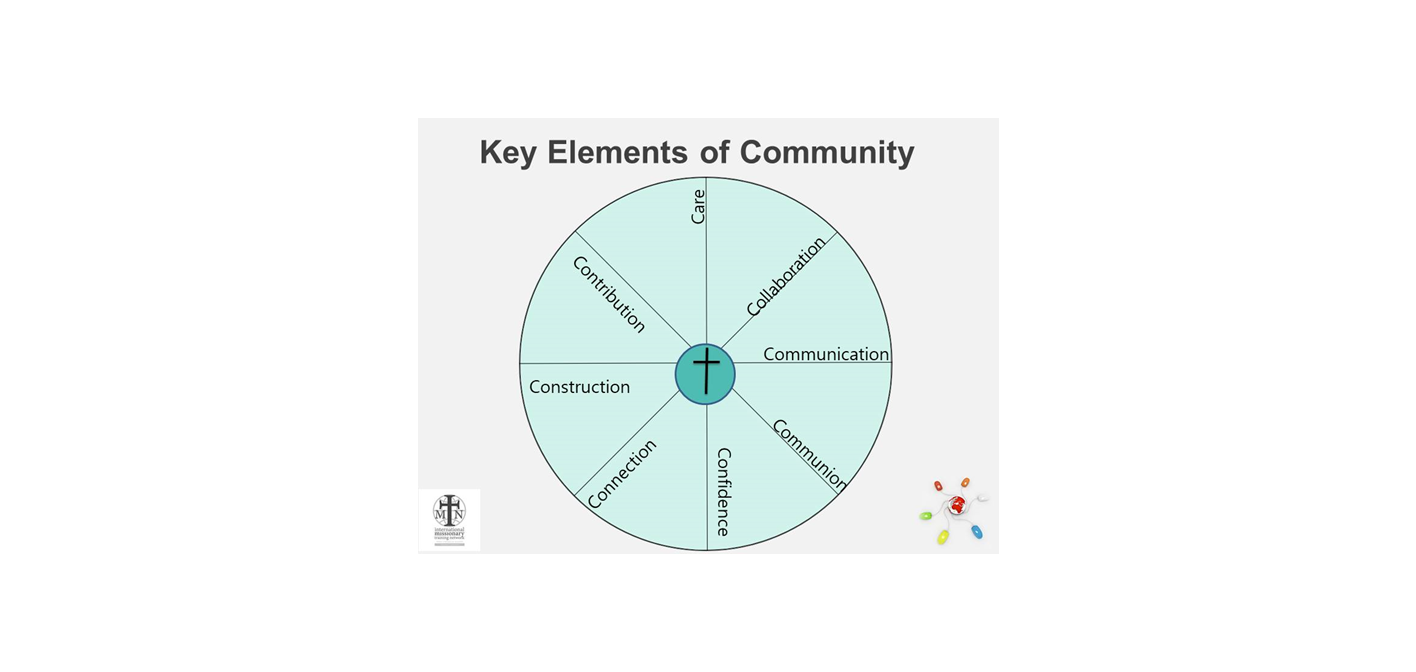
Care
- Be intentional about pastoral care
- Build or maintain a caring relationship with one another
- Check up on students especially if they are absent – physically or emotionally
- Hold regular tutorials
- Pray for your students and email them to tell them you are doing it.
- Encourage all students to have a mentor or trusted friend that they can discuss their studies with (in their location)
- Encourage students to care for one another
Collaboration
- Actively encourage collaborative learning
- shared projects, presentations
- Group discussions – forums, breakout rooms
- Peer assessment
- Be a “guide on the side” not a “sage on the stage”
- Draw on the students’ experience and knowledge
- Facilitate discussion rather than lecture
Communication
Regular communication reduces a sense of distance
Distance learners feel silence more acutely than those face-to-face.
- Communicate the little things e.g. delays in a class starting, when resources have been uploaded etc.
- Share good news as well as problems!
- Provide clear instructions and guidance
- Communicate in ‘bite size chunks’ – when teaching and in written materials
- Fill in gaps verbally in an absence of visual cues – “is everyone happy? Give me a wave if you can hear me……”
- Be aware of cross-cultural communication differences
Communion
Building up a sense of unity within the body of Christ (Acts 2:42-7)
- Provide regular opportunities to have fellowship together
- Worship together – hold simple services – recorded or live; share links to worship videos;
- Encourage prayer for one another – e.g. prayer forums or meetings e.g. using Zoom (or equivalent) breakout rooms.
- If using videoconferencing share a simple meal together, or if possible, Holy Communion.
Confidence
- Provide an environment where students feel that they can be themselves and socially present
- Is it secure and safe to use?
- Is privacy respected – e.g. not allowing screenshots of participants, use of aliases (if necessary)
- Are recordings in a safe location accessible only to course participants? Audio vs. video?
- Is it welcoming?
- Is there an atmosphere of openness and trust?
- If I was a student would I feel comfortable in this session?
- Intentionally build confidence in the students
- Encourage the less confident student
- Online forums are helpful for reflectors and less confident speakers of other languages
Connection
- Technology – which technologies can be accessed by your team and students?
- Are they simple to implement and operate?
- Can users connect on mobile devices?
- Make sure that everyone knows how to use them!
- Build around the lowest common denominator – i.e. the student who has the slowest internet connection
- Common ground – build in opportunities to create and explore shared experiences
- Introductions through forums, live conversations, Face to Face
- Recreation, relaxation e.g. virtual cafés
- Informal chat before and after class vs. waiting rooms
- Make it fun! - Zoom coffee parties, social events, games within the whole community
Construction
- Build your community step by step
- Start with activities/icebreakers that work Face to Face and adapt them to the online environment
- You can become more adventurous later!
- Allow for constructive learning
- Provide plenty of time for discussion and questions
- Encourage reflection
- Be real – let the learning happen as it goes along – let the learner be part of the process
Contribution
- Encourage everyone to participate BUT
- Be aware of cultural ‘netiquette’
- Look out for those in the background
- Use breakout groups to draw out the quieter student e.g. ask them to feedback response
- Allow time for reflection before asking for a response
- Ask the more active participants to take a back seat to allow other to share their thoughts
- Follow up non-engagement
- Don’t assume that silence = a lack of interest – is there a connection problem? Is the student struggling to understand?
- Be aware of “Zoom fatigue” – allow for breaks from the screen
By intentionally including these elements we will see learners make a contribution to the wider mission and ministry in which we serve. Building the community is the most important aspect – the technology should enhance not detract from it.
